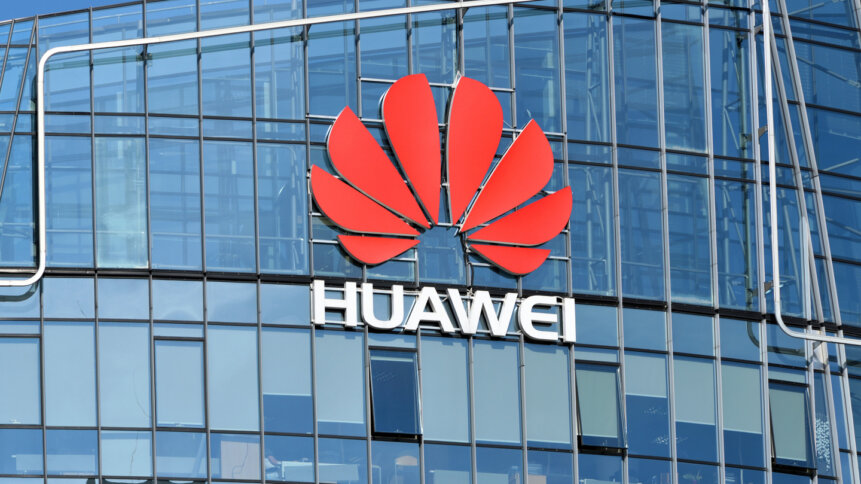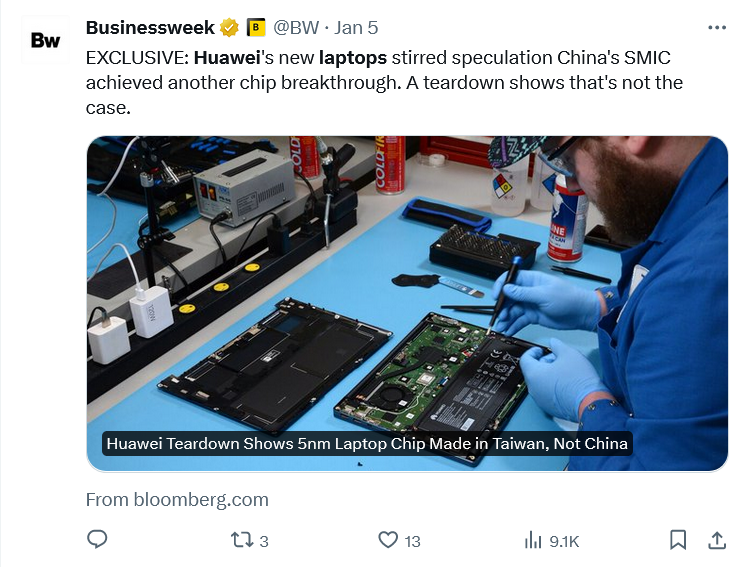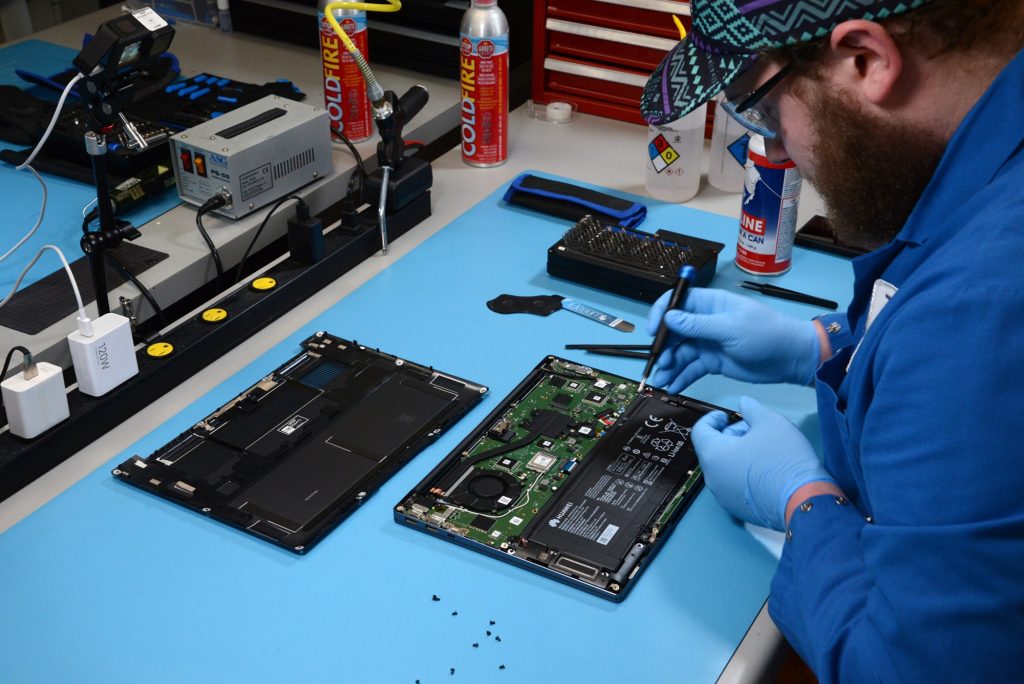Huawei: A teardown of the latest laptop shows a chip made in Taiwan, not China

- The 5nm chip in the laptop was manufactured by TSMC in 2020, coinciding with the period when US sanctions restricted Huawei from accessing chipmakers.
- TechInsights‘ discovery suggests that Kirin 9006C assembly and packaging took place in the third quarter of 2020, aligning with the timing of the 2020 Huawei sanctions that began in the second quarter.
- How long can stored chips fuel a fight against US restrictions?
In August 2023, Huawei Technologies Co. achieved a momentous breakthrough, seemingly defying the constraints of US sanctions on semiconductor advancements. The pivotal discovery emerged through a meticulous examination of the primary chip nestled within the Mate 60 Pro smartphone, revealing that Semiconductor Manufacturing International Corp. (SMIC) had bypassed Washington’s attempts to restrict Huawei’s access to high-performance chips.
The chips showcased 7-nanometer technology, defying stringent limitations that confined Chinese companies to chip production beyond the 14 or 16-nm threshold.
With a sense of technological triumph, Chinese state media celebrated the microchips at the core of Huawei’s Mate 60 Pro as a powerful testament to Chinese ingenuity, breaking free from the constraints imposed by America’s blockade on advanced chipmaking technologies.
The technological mission statement of the Mate 60, not to mention its performance as a smartphone, captured the hearts of Chinese consumers in the last quarter of 2023, propelling Huawei beyond the symbolic revenue threshold of US$100 billion. The triumph not only reinstated the company’s financial standing but also eroded the towering dominance of Apple Inc.’s iPhone.
The Huawei Mate 60 Pro phone, powered by the domestically developed Kirin 9000S chip manufactured by China (SMIC), reflects significant progress in China’s quest to improve its domestic chip production ecosystem. “It is very concerning, but we’re going to take the strongest action to protect the US,” the US Commerce Secretary Gina M. Raimondo told Bloomberg on December 11 during her visit to China.
Raimondo’s remarks might have come off as a face-saving measure considering the efforts made by the US to prevent China from manufacturing such components. Until recently, SMIC was known for producing parts with a maximum of 14nm. However, a teardown study of the Mate 60 Pro by TechInsights for Bloomberg in September last year indicates that China can now have 7nm components, whether the US and its allies like it or not.

What’s inside the box?
Huawei: smartphone and laptops with more advanced chips is the start of many more
During the company’s annual conference in China last month, Huawei CEO Richard Yu declared that the company will launch more leading and disruptive products in 2024. “We will continue to exceed everyone’s expectations,” he promised. In the same month, Huawei took the world by surprise again, this time through a new laptop equipped with an even more advanced chip: the 5-nm application processor (AP).
According to its website, Huawei’s new laptop, the Qingyun L540, is powered by the Kirin 9006C AP chip made through a 5-nm process. It has an eight-core architecture and a clock speed of up to 3.13 gigahertz (GHz). Venturing into the realm of 5-nm technology marks a significant stride for the Shenzhen-based tech giant, placing it closer to the cutting-edge processes predominantly focused on 3nm nodes.
The 5nm feat by TSMC, not SMIC

Getting to grips with the new Huawei laptop. Source: TechInsights.
Following a teardown of the Mate 60 Pro that TechInsights conducted for Bloomberg News in September 2023, leading to the revelation that the new Kirin 9000s chip was fabricated in China by SMIC, a similar dismantle was done on the Qingyun L540 notebook, the latest laptop by Huawei, released last month. After all, the debut of the 14-inch ultralight in early December, featuring a 5nm processor, sparked intense speculation about China’s domestic semiconductor manufacturing capabilities, suggesting a more advanced state of the Chinese art than was previously believed to be the case.
This time, the teardown revealed that the enigmatic 5nm Kirin 9006C processor was made by chip giant Taiwan Semiconductor Manufacturing Co (TSMC), rather than a Chinese manufacturer. An investigation into the origin of the underlying silicon showed that “analysis confirms with high confidence that the HiSilicon Kirin 9006C is indeed manufactured by TSMC, dispelling debates about SMIC involvement.”
The findings also show that the notebooks’ processor strongly resembles the HiSilicon Kirin 9000 which was packaged in the 35th week of 2020. “The die uses the same BEOL [back end of line] stack and process node that TechInsights has reported for the Kirin 9000 processor,” the team concluded.
The process by which Huawei acquired a three-year-old processor remains unclear, but the Chinese company has been building semiconductor reserves since facing global access restrictions. Despite being on the Washington Entity List since 2019, TSMC only stopped fulfilling Huawei orders in 2020 to comply with heightened US trade restrictions.










